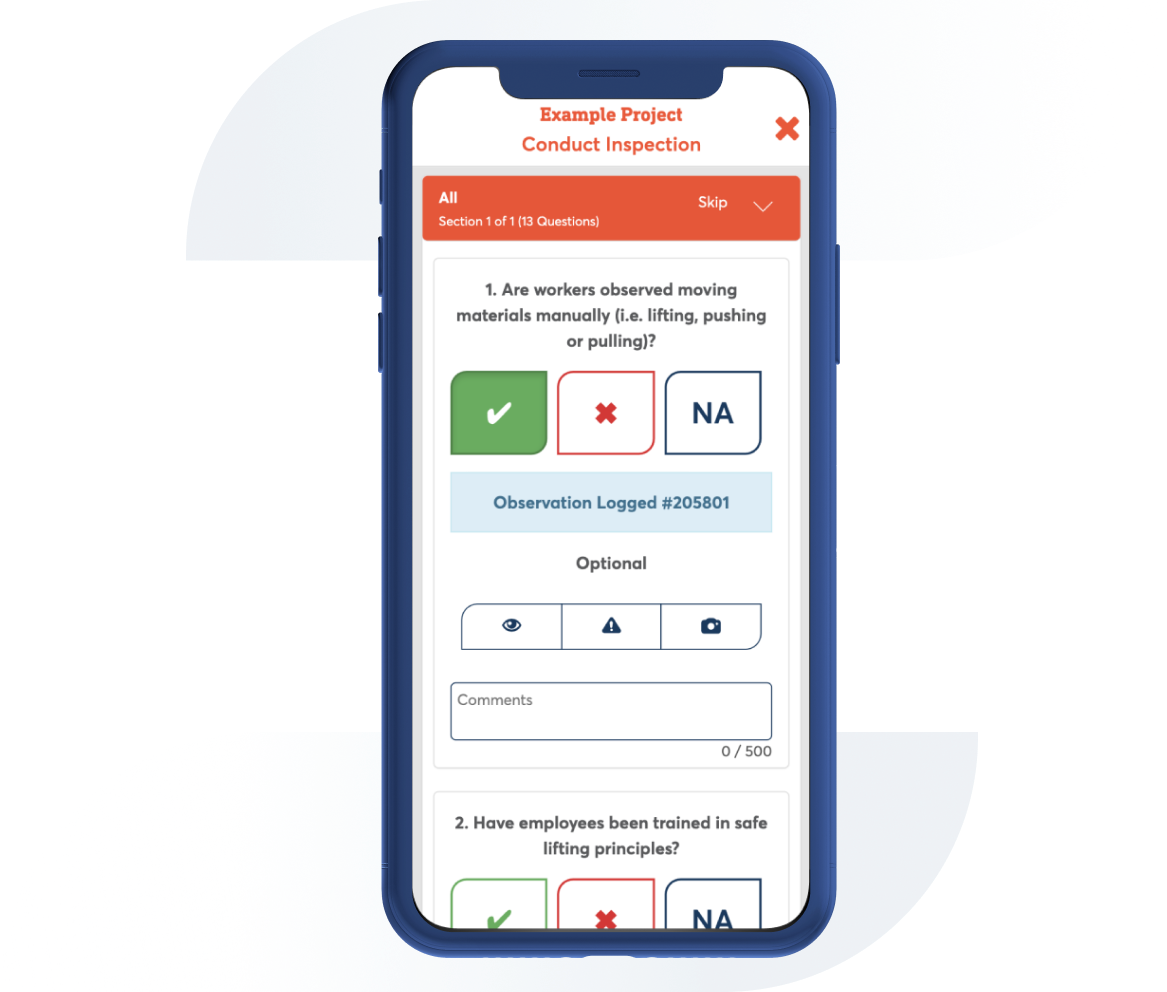Excavation Checklist
Contributor: Safesite Jurisdiction: OSHA
Review your excavation site by using this checklist to look for proper excavation tools, water and soil conditions, as well as protective and preventative safety equipment to keep site workers safe.

Template Preview
1. What is the soil classifcation?
2. What type of protective system is being used? Choices are: Sloping, Shielding, Shoring, Benching
3. Have utility companies contacted and/or located?
Actions
4. Has the exact/suspected location of utilities marked or white lined?
Actions
5. Do you have a utility locate number?
Actions
6. What is the utility locate number?
7. Have underground installations protected, supported, or removed when excavation is open?
Actions
8. Is there lateral travel to means of egress no greater than 25 feet in excavations 4 feet in depth?
Actions
9. Do ladders used in excavations secured and extended 3 feet above the edge of excavation?
Actions
10. Are structural ramps used by employees designed by the competent person?
Actions
11. Are structural ramps used by equipment designed by registered Professional Engineer?
Actions
12. Are ramps constructed of materials of uniform thickness, cleated, with no slip surface?
Actions
13. Are Employees protected from cave ins when entering or exiting the excavation?
Actions
14. Has any water accumulated in the trench?
Actions
15. Is there any water seepage from walls or bottom?
Actions
16. Have precautions taken to protect employees from water accumulation in or near excavation?
Actions
17. Has water removal equipment beem monitored by a competent person?
Actions
18. Surface water or runoff diverted or controlled to prevent accumulation in excavation?
Actions
19. Have inspections made after each rainstorm or other hazard increasing occurrence?
Actions
20. Have atmosphere tested where there is reasonable possibility of oxygen deficiency, combustible, or other harmful containment exposing employees to a hazard?
Actions
21. Can the trench / excavation bebe classified as a "confined space"?
Actions
22. Has testing conducted often to ensure that the atmosphere remains safe?
Actions
23. Are spoil piles, equipment, & employees back at least 2 feet back from edge of excavation?
Actions
24. Are there tension cracks (fracture planes) along trench wall?
Actions
25. Are there any shrinkage cracks in trench walls?
Actions
26. Is there layered soil present?
Actions
27. Are there any trees, boulders, signs, poles, etc. in the area?
Actions
28. Are surface encumbrances supported or removed?
Actions
29. Are Employees prohibited from working on the faces of slopes, benches, or above others?
Actions
30. Are barriers & fall protection provided for all excavations, pits, shafts, etc.?
Actions
31. Are warning system utilized when mobile equipment is operating near edge of excavation?
Actions
32. Support Systems: Support systems provided to insure stability of adjacent structures, roadways, etc.?
Actions
33. Are members of support system securely fastened to prevent failure?
Actions
34. Is there any fluid leakage detected in aluminum shoring?
Actions
35. Are employees and ladder inside the trench box / shield?
Actions
36. Does shielding extends min. 18" above bottom cut of slope?
Actions

Can't find what you are looking for?
